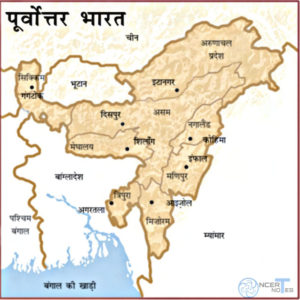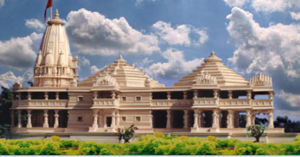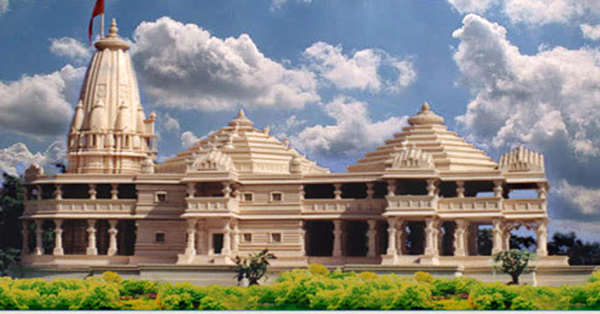
After a decade long historical, political and legal dispute and with a Supreme Court intervention brought closure in the matter of construction of Shri Ram Mandir and, finally Lord Rama shall get its abode to live. With Sacred soil from holy places and prominent temples from across the country and almost all religiously significant water bodies in India are going to play a pivotal role during the construction of the Ram Mandir. The holy elements are going to be in Ayodhya when PM Modi attends the ‘Bhoomi Poojan’ on August 5 for the construction of the temple. Stories of ‘Maryada Purushottam’ Ram who is a reincarnation of Lord Vishnu and an epitome of righteousness was prevalent in every corner of India through tradition and culture. Therefore, the presence of sacred soil and water from every regions of India naturally going to signify the age long cultural roots existed during pre-Colonial period across the country. This shall reflect the sentiments and emotion of people of India which is passing from generation to generation through many folk-tales and songs.
The word ‘Ram’ is not merely a word for an ancient civilization like India which is still in existence till date. The name represents an identity, a value which has been in practice and alive superseding all historical ages. It is live in the hearts of people through folk stories from northern to southern region of India then from West to Eastern part of India. If there is a name in all parts of India that a child reveres early on his life, it is the name ‘Rama’. His legendary life stories have travelled beyond the shores of India to countries in South-East Asia where the Ramayana– which is artistically depicted through drama, music, dance, art and sculptor, even today.

India is a homeland to Ramayana , one of the largest epic poems in Indian Literature, a tale of spiritual heroism and the struggle for truth through an era, unapologetically true to its time period holding within its lessons for people of all times and places. However, it is distressing to note that for decades there was an ongoing and continuous distressing happened with this legendary figure in a spiritual country like India. There was less consensus and more controversies.
Saga of Ramayana was also prevalent in present North-eastern part of India. The whole idea that North-East of India was peripheral to Indian civilization and culture in the early centuries of Christian era is based on the inadequate data and unfounded suppositions. Very little effort has been done so far to explore the North-East Indian land route through which elements of Indian civilization were exported to the South-East Asia. The Tra-Kieu inscription of King Prakashdhara of Champa (A.D. 653-679) mentions the erection of an image of Valmiki in the southern part of the present day Vietnam. It shows that how Indians travelling from the North-eastern land route, carried the eastern version of the epic story to the countries of Indochina is a hypothesis which cannot be dismissed together. The Rama legend, which travelled through north-eastern land route, was considerably transformed into its new home of adoption and returned to the North-Eaststates of India by the 18th century with the Indochinese population trekking down along the Brahmaputra valley or the Patkai hills.
However, as I mentioned earlier it is a misfortune that there were more controversies regarding the name Lord Rama in Indian than a word of reverence in the last few decades. It is may be because many of us now lived with a kind of mixed identity not knowing our own cultural and ancient root. The struggle of Ram Mandir becomes a matter of irrelevant for many people because of excessive induction of foreign ethos without understanding its intricacies.
Still as it says time is everything. It is matter of pride for each one of fellow Indians to witness a recent development related to Ram Mandir, where a century old dispute over the site was resolved in November last year, as the Supreme Court of the Temple trust so, finally after loads of turmoil Ram Mandir foundation likely to laid on August 5th 2020 with a Bhoomi Pujan ceremony in Ayodhya. Consequently, Ram Janmabhoomi Teertha Kshetra Trust Member, said water and soilfrom sacred river and holy places have been sending from across the country to Ayudhya. Therefore, with the ‘Bhumi Pujan’ is nearing the holy soil water of Kamakhya Temple, which is one of the 51 Shaktipeeth, sent to Ayodhya. The Doloi of Maa Kamakhya Devalaya Committee, Kavindra Sharma said that collected soil and water from the temple to be used in the foundation laying ceremony for the Ram Mandir in Ayodhya.
Similarly, soil and water from Meghalaya’s Jaintia Hills were also collected to be used in building Ram Mandir. The Water collected from two rivers namely Myntdu and Myntang and soil from Syntu Ksair, Jowai and Nartiang. It is said that a 600 years old Durga Temple is located at Nartiang in the West Jaintia Hills district of Meghalaya. This temple is also one of the 51 Shaktipeethas and is one of the holiest sites for devotees. A section of ethnic community of Jaintia Hills of Meghalaya who are followers of sanatan dharma, believes that this temple is the permanent abode of Goddess Durga. Myntdu river is one of the major water bodies in West Jaintia Hills district, locally known as ‘Ka Tawiar ka Taken (Our Guradian Angle) in the Pnar dialect.
In addition waters and soils are being collected from other states of North-East India too. These are as follows :
List of Soils and Water Collected across North-Eastern States
| River | Area | State |
| Brahmaputra | Assam | Assam |
| Dhansiri | Dimapur | Nagaland |
| Barak | Cachar | Assam |
| Dhaleshwari | Cachar | Assam |
| Surma | Cachar | Assam |
| Disang | Sivsagar | Assam |
| Kopili | Dima Hasao | Assam |
| Mahur | Dima Hasao | Assam |
| Jatinga | Dima Hasao | Assam |
| Langting | Dima Hasao | Assam |
| Gumati | Tripura | |
| Kushiyara | Cachar/Barak | Assam |
| Longai | Karimganj | Assam |
| Tut | Mizoram | |
| Tlawng | Sairang | Mizoram |
| Karnaphuli | Mizoram | |
| Imphal | Mizoram | |
| Jairl | Manipur | |
| Lohit | Parashuram Kund | Arunachal Pradesh |
| Sipu | East Siang | Arunachal Pradesh |
| Siyom | West Siang | Arunachal Pradesh |
| Tirap | Arunachal Pradesh | |
| Dicrong | Doimukh | Arunachal Pradesh |
| Myntdu | Jowai | Meghalaya |
| Morangang | Nartiang | Meghalaya |
| Moragang | Majai | Meghalaya |
| Umiam Lake | Bada Pani | Meghalaya |
Till present day. North-Eastern culture of India has always been treated and looked upon as a unique entity by many native historians who are already crippled by the crooked power of colonialism with no connection with the rest of India and Indian civilization per se. Unfortunately, no concrete work has been done to supersede that hegemonic power even after reaching at the heights of information and knowledge society. In fact,there is an ample of evidences in the tradition and culture of North-Eastern culture to prove that how the stories of Rama were predominant. For example, a close look at the Mizo version has, disclosed that most of the Mizo folk-tale has presence of Ramayana. The Karbis of North-Eastern India has a folk version of Ramayana which is popularly known as Sabin Alun (Chabin Alun). The tradition of song and music in Karbi Society started with Sabin Alun. It is literally means Sabin’s songs, which has been composed by Hemphu, the supreme creator, akin to Lord Vishnu. Even in Assam also 14 different forms of Kamrupi or Assamese Ramayan are so far collected and these are written in Different period by different writers. Madhav Kandali was the old and foremost one who translated this epic from Sanskrit language to old Kamrupi Language in 14th Century. It is one of the sources of the Old Assamese language and literature. It is also known as Kamrupi Language which is very old in form and nature. In Tripura if you visit the hills and deep forests and Chittagong hills Tract the old people often found reading Ramayana and Mahabharata both. Actually, the epics have been found themselves to be perennial sources of inspiration and an ocean of wisdom from which a galaxy of folktales, proverb, riddles, poems, songs, drama, dances, dialogues and visual arts have been composed by people.
Manipuri Literature which has a rich old heritage from about 10th century A.D. has a Manipuri Ramayana with all 7 cantos. King Garibniwaz entrusted one Pandit Angom Gopi or Kshema Singh Moiramba with his assistants to compose the Ramayana with a regional complexion and a large dose of the cultural soil of Manipur and it’s become a national epic of the Manipuris. The story of Ramayana is also known among the Khasis and is used to be narrated by the elderly people while sitting around the hearth. It is said that in Meghalaya the names of Rama and Lakhan are common for twin brothers and Durga and Ganga (pronounce as Konga) fpr twin sisters.
Conclusion:
The existence of Lord Rama is not merely limited to concrete structure. It is a wave of cultural phenomena. Indian culture is not just the domain of art and its understanding but includes literary texts that created meaning through practices, rituals, events and structures. It manifests a way of life that is based on universal values. In the context of North-Eastern India in particular and the whole country in general Ramayana has best served the purpose of cultural continuity and integration. And the construction of Ram Mandir shall further strengthen this value which has been revered since time immemorial.
It is a matter of great disappointment till now that there are lots of forces were working to disrupt this bridge. North-Eastern part has been treated in isolation for many decades. A myth was propagated through different medium that there was no connection between North-eastern India with the greater partof India.Numbers of conspiracies were written to show that people living in hills and forest has nothing with Sanatanic values. Whereas the fact was there has always been a cultural oneness from Iran to Indonesia (Angkor Vat). North-east was never an excluded part of India. Sanatan Dharma was extended throughout Northeast India and there was a similarity between life philosophy between hills and valley people. Hope such a great endeavor of cultural oneness that going to happen through the construction Ram Mandir shall unravel the true story of Northeastern Bharat.

